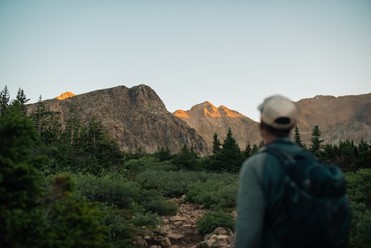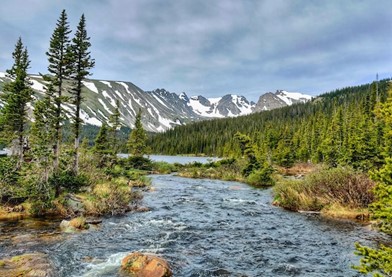Step into the world of rugged adventure as Jason Barton of Colorado discusses conquering the state’s illustrious 14,000-foot peaks. In the following article, Jason Barton recounts the breathtaking landscapes that unfold atop these mountains, exploring the highs and lows of tackling Colorado’s crown jewels, and the complexities that come with the pursuit of these towering summits.
According to hiking experts, a “14er” includes any mountain that soars higher in elevation than 14,000 feet over sea level, which Colorado has the most of. Mastering the ascent of these lofty peaks during a hiking adventure hinges on a strategic approach. Timing is paramount—it’s important to choose the optimal season when the trails are dry.
Equally essential is packing the right gear, curated to navigate potential challenges that await. However, the journey isn’t solely a physical feat; it’s a shared experience. Hikers are advised to show reverence for fellow explorers treading the same path, cultivating a culture of respect and enjoyment.
Jason Barton of Colorado Explains How to Master 14,000 Feet
Hiking has so many incredible benefits: whether looking for time to spend outdoors, getting away from the hustle and bustle of life, exercising for physical health, or benefiting from the sense of accomplishment it can provide, anyone can find joy in hiking.
With that said, anything worth doing is worth doing well, and safely. For that reason, hiking the tallest mountains in Colorado should always be done with a professional guide.
Timing is Everything
Jason Barton of Colorado explains that 14ers are incredible challenges to overcome, but going during the right time of year is certainly crucial to the possibility of overcoming that challenge.
After all, these mountains see quite a bit of snowfall during the winter and shoulder months. This can, of course, make trails uninhabitable; however, this does not mean that springtime is necessarily a good time to take on this particular adventure, either. Melting snow creates an equally unpleasant, dangerously difficult trail to pursue.
For most hikers, the best time to take on a Colorado 14er and increase the chances of summiting successfully are between June and July.
Jason Barton of Colorado says that during these months, the trails are clearer and drier on average. This does not mean that snow and rain won’t make an appearance, but it will help a hiker to avoid more dangerous conditions, and limited daylight.
Essentials to Pack
When it comes to gear, while the idea of scaling a these trails with just a water bottle and sneakers might carry a heroic allure, it’s far from safe or practical. Embracing the right gear isn’t just a choice—it’s a game-changer that significantly amplifies the odds of achieving this lofty goal.
Proper footwear with deep tread is essential to avoid injury (think structured hiking boots). A rain jacket and layering options are a must-have, as well; no matter what time of year it is, conditions nearing the summit can change in an instant. Multiple layers of thin, breathable fabrics are the best choice for clothing.
Jason Barton of Colorado says it’s important to carry enough water in case of emergency as well. Be sure to include easy to carry food options with enough calories to maintain energy for the duration of the climb.
Finally, don’t forget to bring a flashlight, matches and first aid kit. Even on marked trails, there is always a chance that something can go wrong, and being prepared increases the chance of returning to the base safely.
 Respect the Adventure
Respect the Adventure
Unfortunately, not everyone is respectful when taking on Colorado’s peaks. Some access to these beautiful trails is being cut off due to trespassing hikers who do not show respect of the terrain, or their fellow hikers while using the trails.
Jason Barton of Colorado says that to avoid this trend from continuing, be sure to follow a few basic rules. For example, while some trails are dog-friendly, it is important to keep them on a leash: not every hiker is comfortable with unleashed animals, and accidents can happen.
Additionally, making room for those who are passing, even in a narrow section of the trail, is common courtesy and can prevent risk of injury or falls. Perhaps most importantly, leave no trace! Trails may be a source of recreation to humans, but to wildlife, it’s home.
In Conclusion
Conquering Colorado’s impressive landscape involves appropriate planning. Individuals must be aware of what they’re getting into on these adventures. However, Jason Barton of Colorado notes that embarking on such adventures offers a treasure trove of benefits.
Beyond the summit’s elevation, these trails unveil a profound sense of accomplishment and a surge of unwavering confidence. Moreover, they reveal uncharted realms of physical capability, while each upward stride exposes breathtaking vistas—a reward so immediate, it’s etched forever in the heart. So, step onto the path, and journey to the core of personal resilience and the boundless beauty that awaits at 14,000 feet.






